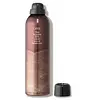What's inside
What's inside
 Key Ingredients
Key Ingredients

No key ingredients
 Benefits
Benefits

No benefits
 Concerns
Concerns

 Ingredients Side-by-side
Ingredients Side-by-side

Hydrofluorocarbon 152a
Sd Alcohol 40-B
AstringentButane
Acrylates/Octylacrylamide Copolymer
Isobutane
Aluminum Starch Octenylsuccinate
AbsorbentParfum
MaskingNeopentyl Glycol Diheptanoate
EmollientBoron Nitride
AbsorbentIsododecane
EmollientWater
Skin ConditioningPanthenol
Skin ConditioningBenzophenone-4
UV AbsorberTocopheryl Acetate
AntioxidantZeolite
AbsorbentGlycerin
HumectantCitrullus Lanatus Fruit Extract
Skin ConditioningLitchi Chinensis Fruit Extract
Skin ConditioningLeontopodium Alpinum Flower/Leaf Extract
Skin ConditioningPhenoxyethanol
PreservativeStyrax Benzoin Resin Extract
MaskingCitric Acid
BufferingPotassium Sorbate
PreservativeSodium Benzoate
MaskingLimonene
PerfumingHexyl Cinnamal
PerfumingLinalool
PerfumingCitral
PerfumingHydrofluorocarbon 152a, Sd Alcohol 40-B, Butane, Acrylates/Octylacrylamide Copolymer, Isobutane, Aluminum Starch Octenylsuccinate, Parfum, Neopentyl Glycol Diheptanoate, Boron Nitride, Isododecane, Water, Panthenol, Benzophenone-4, Tocopheryl Acetate, Zeolite, Glycerin, Citrullus Lanatus Fruit Extract, Litchi Chinensis Fruit Extract, Leontopodium Alpinum Flower/Leaf Extract, Phenoxyethanol, Styrax Benzoin Resin Extract, Citric Acid, Potassium Sorbate, Sodium Benzoate, Limonene, Hexyl Cinnamal, Linalool, Citral
Sd Alcohol 40-B
AstringentButane
Hydrofluorocarbon 152a
Octylacrylamide/Acrylates/Butylaminoethyl Methacrylate Copolymer
Ethoxydiglycol
HumectantSd Alcohol 40-B, Butane, Hydrofluorocarbon 152a, Octylacrylamide/Acrylates/Butylaminoethyl Methacrylate Copolymer, Ethoxydiglycol, Aminomethyl Propanol, Isobutane, Parfum, Benzyl Salicylate, Limonene, Eugenol, Hexyl Cinnamal, Linalool, PEG/PPG-17/18 Dimethicone, Acetyl Triethyl Citrate, Ethylhexyl Methoxycinnamate
Ingredients Explained
These ingredients are found in both products.
Ingredients higher up in an ingredient list are typically present in a larger amount.
Butane is a gas derived from petroleum and natural gas. It is used as an aerosol propellant.
Hexyl Cinnamal is a fragrance ingredient with a similar scent to jasmine. It can be naturally found in chamomile essential oil.
This ingredient is a known EU allergen and may sensitize the skin. The EU requires this ingredient to be listed separately on an ingredients list.
Hexyl Cinnamal is not water soluble but is soluble in oils.
Learn more about Hexyl CinnamalWe don't have a description for Hydrofluorocarbon 152a yet.
We don't have a description for Isobutane yet.
Limonene is a fragrance that adds scent and taste to a formulation.
It's found in the peel oil of citrus fruits and other plants such as lavender and eucalyptus. The scent of limonene is generally described as "sweet citrus".
Limonene acts as an antioxidant, meaning it helps neutralize free radicals.
When exposed to air, oxidized limonene may sensitize the skin. Because of this, limonene is often avoided by people with sensitive skin.
The term 'fragrance' is not regulated in many countries. In many cases, it is up to the brand to define this term. For instance, many brands choose to label themselves as "fragrance-free" because they are not using synthetic fragrances. However, their products may still contain ingredients such as essential oils that are considered a fragrance.
Learn more about LimoneneLinalool is a fragrance and helps add scent to products. It's derived from common plants such as cinnamon, mint, citrus, and lavender.
Like Limonene, this ingredient oxidizes when exposed to air. Oxidized linalool can cause allergies and skin sensitivity.
This ingredient has a scent that is floral, spicy tropical, and citrus-like.
Learn more about LinaloolParfum is a catch-all term for an ingredient or more that is used to give a scent to products.
Also called "fragrance", this ingredient can be a blend of hundreds of chemicals or plant oils. This means every product with "fragrance" or "parfum" in the ingredients list is a different mixture.
For instance, Habanolide is a proprietary trade name for a specific aroma chemical. When used as a fragrance ingredient in cosmetics, most aroma chemicals fall under the broad labeling category of “FRAGRANCE” or “PARFUM” according to EU and US regulations.
The term 'parfum' or 'fragrance' is not regulated in many countries. In many cases, it is up to the brand to define this term.
For instance, many brands choose to label themselves as "fragrance-free" because they are not using synthetic fragrances. However, their products may still contain ingredients such as essential oils that are considered a fragrance by INCI standards.
One example is Calendula flower extract. Calendula is an essential oil that still imparts a scent or 'fragrance'.
Depending on the blend, the ingredients in the mixture can cause allergies and sensitivities on the skin. Some ingredients that are known EU allergens include linalool and citronellol.
Parfum can also be used to mask or cover an unpleasant scent.
The bottom line is: not all fragrances/parfum/ingredients are created equally. If you are worried about fragrances, we recommend taking a closer look at an ingredient. And of course, we always recommend speaking with a professional.
Learn more about ParfumSD Alcohol 40-B is created by denaturing ethanol with tert-Butyl alcohol and denatonium benzoate. It is a solvent and astringent.
The 'SD' stands for 'specially denatured'. Denatured alcohol means the structure has been altered.
The 40-B is given by the U.S. Bureau of Alcohol, Tobacco, and Firearms. This is in accordance to the method of how the alcohol was denatured.
This ingredient is a solvent alcohol.
Learn more about Sd Alcohol 40-B